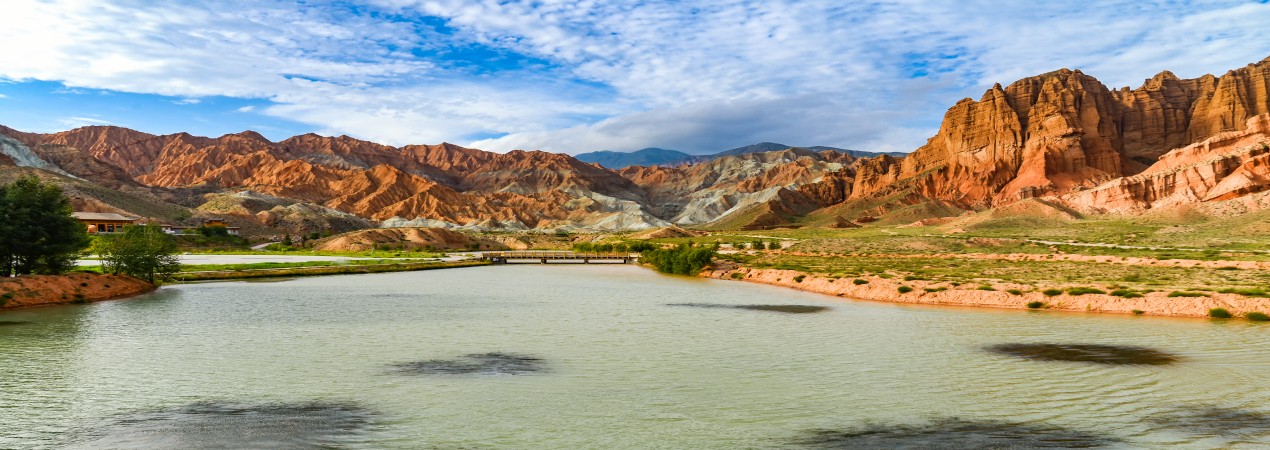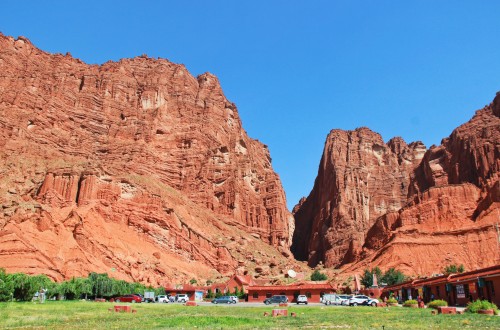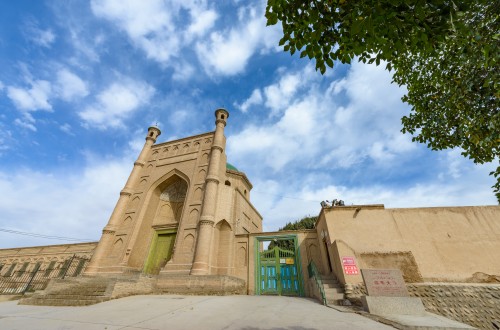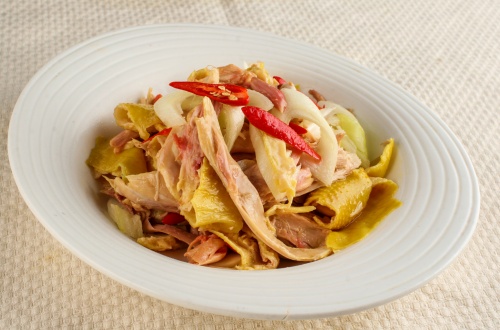Aksu Travel Guide

The Aksu Prefecture is located in the central part of southern Xinjiang, on the northwestern edge of the Taklimakan Desert, and in the upper reaches of the Tarim River, and belongs to an arid climate zone. Situated in the hinterland of Eurasia and far from the oceans, it features a typical warm-temperate continental arid climate, characterized by scarce precipitation, high evaporation, dry weather, and a relatively long frost-free period.
- English Name: Aksu Prefecture
- Chinese Name: 阿克苏地区 (ā kè sū dì qū)
- Government: A region in Xinjiang Uygur Autonomous Region
- Location: Situated in the central part of southern Xinjiang, China. Roughly between 41° 10′ 10.85″ N, 80° 16′ 19.02″ E
-
Area code & Zip Code:
Area Code: 0997; Zip Code: 843000 - Airports:Aksu Hongqipo Airport (AKU), Kuqa Qiuci Airport (KCA)
-
Railway Stations:
Aksu Railway Station, Kuqa Railway Station, Xinhe Railway Station, Wensu Railway Station, Baicheng Railway Station, Shaya Railway Station -
Suburban Districts:
Aksu City, Kuqa City, Wensu County, Shaya County, Xinhe County, Baicheng County, Wushi County, Awat County, Keping County - Population: About 2.7257 million
Best Time to Visit Aksu
Even with sunscreen, Aksu's intense sunlight and UV radiation can leave you with a tanned complexion during the scorching summer. Meanwhile, a winter trip to Aksu will captivate you with its stunning snowscapes, but the dry, cold weather is not something the average person can bear. Aksu's spring is a transitional season between winter and summer, with the dry, cold weather lasting until early summer. Therefore, the autumn months of September and October are the best time to visit Aksu.
What to See
 Kuqa Grand Canyon
Kuqa Grand Canyon1. Dolan Tribe: The Dolan Tribe Scenic Area, set against the backdrop of the primitive thousand-year-old Populus euphratica forest and themed around the Dolan folk culture, preserves the historical relics and original living scenes of the Dolan people. It comprehensively and perfectly showcases the Dolan people's architecture, diet, handicrafts, living customs, and festival activities, presenting the primitive and mysterious tribal civilization.
 Kuqa Mosque
Kuqa Mosque2. Kuqa Grand Canyon: Kuqa Grand Canyon in Xinjiang, also known as the Mysterious Grand Canyon of the Tianshan Mountains, is a typical red Danxia landform and is known as the "Red Cliff". A marvelous natural wonder, it is a must-see when traveling along the Duku Highway (serving as its endpoint).
3. Kuqa Mosque: The Kuqa Mosque is located in the old town of Kuqa and is the second largest mosque in Xinjiang, second only to the Id Kah Mosque in Kashgar. Covering an area of 9,040 square meters, the mosque is mainly composed of three parts: the prayer hall, the minaret, and the religious court. With its majestic and spectacular architecture and rich ethnic characteristics, it is one of the focal points for tourists from home and abroad.
Recommended attractions:
How to Get There
Aksu Hongqipo Airport (AKU) operates a total of 36 routes, serving 37 destinations. These include 18 cities outside Xinjiang (reachable via 14 direct routes) and 19 cities within Xinjiang (served by 17 loop and connecting flights).
How far is Aksu from Major Cities
| Cities | Distance from Aksu (km) | By Air to Aksu | By High-Speed Railway to Aksu | By Traditional Train to Aksu |
|---|---|---|---|---|
| Beijing | 3518 | 6hrs | No direct high-speed trains | No direct traditional trains |
| Shanghai | 4665 | 8hrs(With a stopover in Yinchuan) | No direct high-speed trains | No direct traditional trains |
| Xi'an | 3277 | 4hrs | No direct high-speed trains | 34hrs |
| Chengdu | 3110 | 4.5hrs | No direct high-speed trains | No direct traditional trains |
| Lanzhou | 2649 | 4hrs | No direct high-speed trains | No direct traditional trains |
How far is Aksu from Other Xinjiang Cities
| Cities | Distance from Aksu (km) | By Air to Aksu | By High-Speed Railway to Aksu | By Traditional Train to Aksu |
|---|---|---|---|---|
| Kashgar | 461 | 1.5hrs | No direct high-speed trains | 5hrs-8hrs |
| Altay | 1514 | 1.5hrs-3hrs | No direct high-speed trains | No direct traditional trains |
| Korla | 542 | 1hr | No direct high-speed trains | 5hrs-7hrs |
| Urumqi | 1017 | 1.5hrs | No direct high-speed trains | 10hrs-13.5hrs |
| Turpan | 905 | 1.5-3 hrs (direct/stopover flights; direct ones may be unavailable – check ahead) | No direct high-speed trains | 8.5hrs-14.5hrs |
| Ili | 825 | 1hr | No direct high-speed trains | No direct traditional trains |
| Hami | 1346 | 3hrs(With a stopover in Kuqa) | No direct high-speed trains | 13hrs |
| Hotan | 553 | 1hr | No direct high-speed trains | 11hrs-18hrs |
Gourmet Food Recommendations
 Jiaoma Chicken(Spicy and Numbing Chicken)
Jiaoma Chicken(Spicy and Numbing Chicken)Jiaoma Chicken (Spicy and Numbing Chicken) uses original ecological local chickens raised in Xinjiang as the raw material. The chicken is cooked, then mixed with ingredients such as chili peppers, shredded green onions, and onions. After that, chicken soup and spicy-numbing sauce are poured over it, and it can be served once stirred.
Polo (Pilaf), Xinjiang’s version of pilaf, is a fragrant rice dish cooked with meat (often lamb or chicken), carrots, onions, and a blend of spices; it is a staple in Xinjiang cuisine and is often served during special occasions.
Samsa (Baked Meat Pastry) is a savory pastry stuffed with a mixture of ground meat, onions, and spices. It is then baked until golden brown and is a popular snack in Xinjiang.
Souvenir and Shopping
Wushi Chickpeas: Chickpeas, commonly known as peach beans, are abundantly produced in Wushi County, which is hailed as "the Hometown of Chickpeas in China". With a chestnut-like aroma and a glutinous, delicious taste, chickpeas are a very precious and rare planting resource. They have high edible and medicinal value, thus earning the reputation of "the King of Beans".
Wushi Seabuckthorn: Wushi seabuckthorn is a kind of wild berry plant that grows in alpine regions at an altitude of over 1,200 meters. It is rich in nutrients and has a strong fruity aroma. Known as "the King of Vitamin C", it has various effects such as lowering cholesterol, inhibiting cancer cells, and relieving angina pectoris attacks.
Aksu Dates: The Aksu region has long hours of sunshine, large temperature differences between day and night, and a dry climate, which is not suitable for the growth of diseases and pests. Moreover, the red dates here are irrigated with pure snow water from the Tianshan Mountains, all of which contribute to the green, organic, healthy and nutritious quality of Aksu dates.